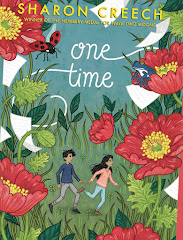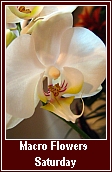One of my passions is book design. I'm not an expert, though. I appreciate books-as-art-objects, especially novels whose design and illustration enhance the story, where form and content mesh seamlessly.
David Diaz's design and illustration of my book The Wanderer (Joanna Cotler Books, HarperCollins, 2000, 305 pages) is (admitting bias) one of my favorites. (Examples above.) Diaz designed a different icon for each of the 78 chapters, plus additional full-page sectional dividers. His artwork bears repeated close study for the way that repeated visual elements (swirls of the sea, for example) echo the story's repeated thematic elements. Some day I would like to frame each of his chapter openings!
The first chapter book in which I remember noticing the visual elements was The Timbertoes by Aldredge and McKee (Beckley-Cardy, 1932, 1943). It was also the first book I read in which I was completely and totally 'in the book.' I remember staring at the illustrations that complemented the text, unable to leave the world of the story:
and
That color illustration still draws me in; the caption still makes me laugh.
David Diaz also "illuminated" my book, The Castle Corona (Joanna Cotler Books, HarperCollins, 2007, 320 pages.) I was stunned at the way his full-color illuminations perfectly captured the tone and milieu of the story. I may have slobbered over the artwork:
Each chapter opens with half-page full-color art.
The paper is rich, the edges are deckled. I love what Diaz and the publisher did with this book.
Three recent books I also greatly admire include:
Kate DiCamillo's The Miraculous Journey of Edward Tulane, with illustrations by Bagram Ibatoulline (Candlewick Press, 2006, 200 pages). I would have loved, as a child, to find this book in my hands. I would have pored over every sepia illustration and every full-color one:
and
Another recent book whose design I especially admire is Where the Mountain Meets the Moon, written and illustrated by Grace Lin (Little Brown, 2009, 282 pages). The meshing of form and content is brilliant:
Do you have favorites, especially among illustrated novels, to recommend?
I have more, so I'll need to revisit the topic later. Meanwhile, please remember that all artwork above is copyrighted by the illustrators.
Ciao, bellas, and good night. . .




















